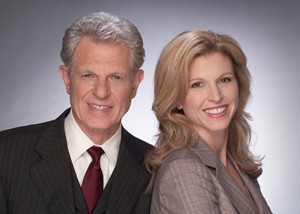We're back for another round, bookworms. And in this segment we're discussing branding with the brand masters themselves: the inimitable Al and Laura Ries.
Those of you new to our Book Club, welcome aboard (learn all here). And those returning for a second round, welcome back...
What will we be doing this segment? We'll be getting a little Darwinian, debunking some long-held branding "truths"—and, likely, spurring some debate. What's more? You get a (free) bonus just for reading this article.
Our feature is The Origin of Brands, a book that explains how changing conditions in the marketplace, much like in nature, create endless opportunities to build new brands and accumulate riches.
But here's where it gets interesting: These opportunities are not found where most people and companies look—that is, in the convergence of existing categories like television, the computer, cell phones, and the Internet. Instead, opportunity for new brands lies in the opposite direction. The truth is that we've been overlooking the strategy of "divergence," resulting in the miniscule survival rate of so many new brands.
By following Darwin's brilliant deduction that new species arise from divergence of existing species, Al and Laura outline an effective strategy for creating and taking an effective brand to market. So, while Darwin gave us "The Origin of Species," Al and Laura give us "The Origin of Brands." I read the book in late 2005 and see it as an important text for marketers, especially given the provocative subject matter—supported through case study upon case study—illuminating how divergence dramatically lowers risk and increases success rates.
Which begs the question: Why is divergence regarded like a dirty little secret? Al and Laura point to the convergence hype, a decades-long theme trumpeted by scores of media outlets.
Q&A With Al and Laura
To kick off this book club segment, I discussed the book's themes with Al and Laura; here are the highlights:
Q: What are the main points of The Origin of Brands?
A: There are four points: First, endless opportunities are constantly being created to build new brands. Second, the best way to take advantage of these opportunities is to create a new category and then be the first brand in that category. Third, as time goes on, new categories will continue to diverge from existing categories. Companies that try to lock categories together with line-extension names or with convergence products are doomed to failure.
And finally, the process of category creation is identical to the process of species creation as documented in Charles Darwin's classic book, The Origin of Species.
Q: Why do you believe that new, successful brands can only be created through divergence?
A: Our studies of marketing history show that virtually every successful new brand was created by divergence of an existing category and not by convergence. Take the first commercial computer, the mainframe computer, the category that built the IBM brand. Did the mainframe computer converge with another product to create an opportunity to build a new brand? No, it did not. The mainframe computer diverged, creating endless opportunities to build brands.
Some computer divergence categories and the brands they spawned include minicomputers (Digital Equipment); workstations (Sun Microsystems); 3-D workstations (Silicon Graphics); personal computers (Apple); business personal computers (Compaq); personal computers sold direct (Dell); desktop laser printers (Hewlett-Packard); computer peripherals (Logitech); hard-drive MP3 players (iPod).
Virtually every product or service category goes through the same process. It starts with a single product and then through the process of divergence creates many new categories and many new opportunities to build brands.
Q: What have been some of the worst branding mistakes you have witnessed over the past few years?
A: Without a doubt, line extension. It is new categories that create opportunities to build new brands. A company should encourage the development of a new category by selecting a new name to represent that category. Instead, companies often hang existing brand names on new categories, thereby sacrificing their ability to dominate these categories in the long run.
Invariably the long-term winners in new categories are the brands with new names, not the brands with line-extended names, like these: Dell, not IBM personal computers; eBay, not Yahoo Auctions; Quicken, not Microsoft Money; PowerBar, not Gatorade energy bars; and Red Bull, not AriZona Extreme Energy. Companies often line-extend because they are focused on building brands rather than creating new categories. But brands are worthless unless they stand for something in the mind. The more things you try to hang on a brand name, the less it stands for.
Q: How about telling us some branding success stories?
A: Dietrich Mateschitz was traveling in Thailand when he encountered a popular health tonic called Krating Daeng. When he returned to Austria, he decided to introduce a similar product, which he called Red Bull.
Even more important than the Red Bull name was his choice of a category name. He called the category an "energy drink." As it happens, the first energy drink. Today, Red Bull does $2.3 billion in sales worldwide, and Dietrich Mateschitz has become the richest man in Austria.
Almost every branding success story follows the same pattern. An entrepreneur notices an empty hole in the marketplace and then introduces a new brand that goes on to exploit that new category. Some examples include Starbucks, the first high-end coffee house; Silk, the first soymilk; Costco, the first warehouse club; Under Armour, the first athletic underwear; and Glide, the first flat dental floss. The list is endless and they all follow the same pattern: Find an open category and then develop a new brand to dominate that category. As the category takes off, your brand also takes off.
Book Club logistics
-
Free Books: While we spread out the 30 free books across time zones in our last segment, we want to be even more fair as we proceed, so recipients of free books will be chosen by way of random selection vs. the first 30 to sign up. It's like the lottery—yes, technology is involved to ensure fairness—but you get a book instead of cash. I hope you get a free book, but even if you don't, please do still participate: at $16.47 for the hardcover and $10.17 (wow!) for the paperback, the book is a steal for all the knowledge it imparts (an eBook is also available for $10.95). And don't forget, there are many future book club segments for getting a free book!
- Book Club Membership: If you signed up for the first segment, you're already in the database (so you need not sign up again—and, yes, you're eligible for a free book). But if you unsubscribed at any point during the first segment, you'll need to sign up again to be eligible to get a free book. But do hurry up and sign up, as I'll be informing the free-book recipients early next week, so you have until Friday, Feb. 16, 5pm EST, to sign up if you've not already (you can sign on to the Book Club at any time, you'll just not be eligible for this segment's free books if you sign up after Friday, Feb. 16).
Group review for the book will start Tuesday, March 20, giving you five weeks to get your books read. I'll close with a few words from Al and Laura Ries:
"We are so excited to be working with the new MarketingProfs Book Club and CK for our book The Origin of Brands. We look forward to stoking the fire over the convergence vs. divergence debate with all of you. When Al & Laura Ries get involved you know it will be controversial! Talk to you all during Group Review in March."
P.S.: Here's your free bonus. Al and Laura have created a 20-page, chapter-by-chapter overview of The Origin of Brands for us to download—absolutely free! While it's not a replacement for the book, it's a terrific piece for you to enjoy before you dive into the full read. Download your copy here.
Here's our nifty disclaimer: Neither CK nor MarketingProfs is in any way retained by any author or publisher to promote any book or make any profit from the sale thereof.
Helpful Links
- Have questions? Go here.
- Want to join the Book Club? Just go right here.
- Still have questions not addressed in our FAQs? email me at: bookclub@marketingprofs.com.




